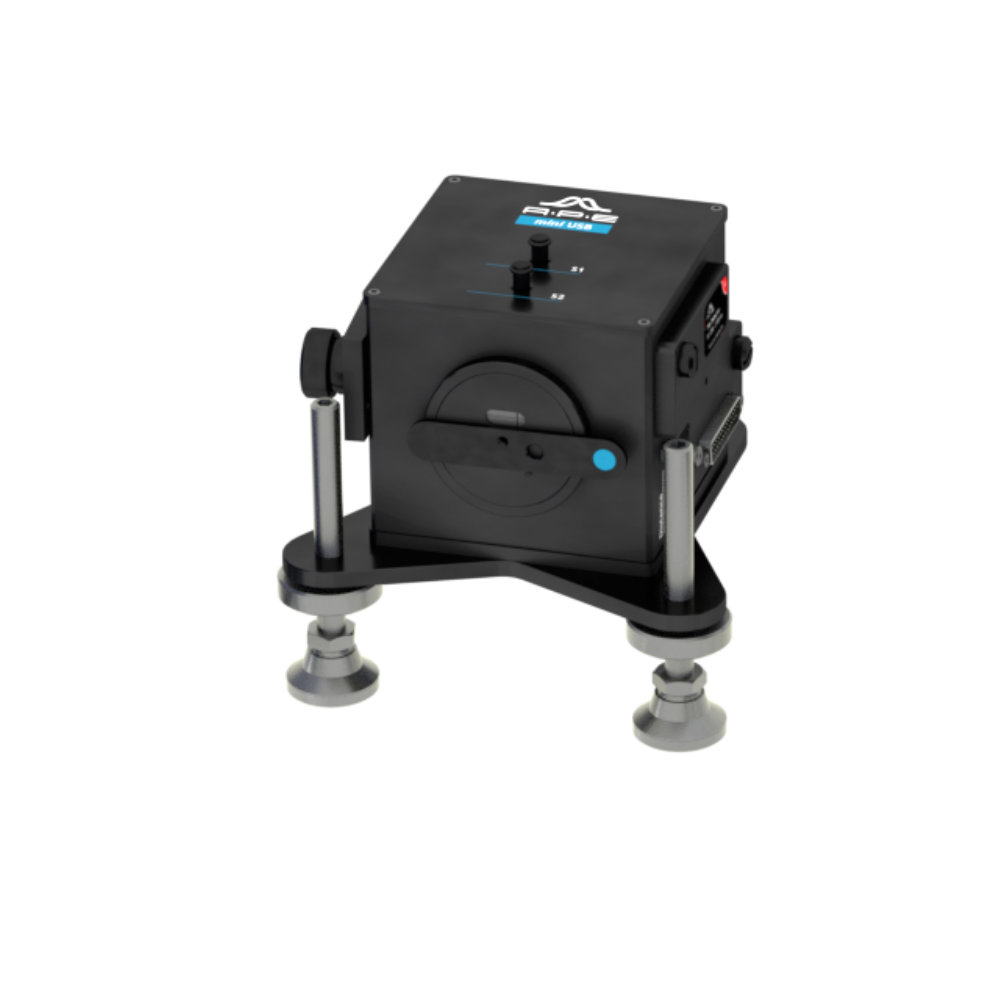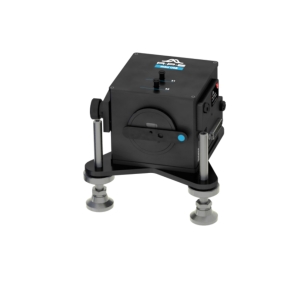Mini TPA/PD
Mini is the perfect combination of tuning-free autocorrelation measurement, compact size and high sensitivity.
Compact Design
With its compact footprint of only 160 x 220 x 155 mm, the Mini autocorrelator is perfect for working environments where space is limited. When it is needed elsewhere, simply place this portable unit in the lightweight aluminum case provided, for easy and safe transportation to the next site.
NIST Traceable Calibration
Laboratories and manufacturers are often faced with systematically establishing an unbroken chain of calibrations to specified references. All APE autocorrelator models are calibrated to a traceable standard in accordance with NIST (U.S. National Institute of Standards and Technology) measurement traceability specifications. A printed and signed calibration certificate is provided with each pulseCheck.
Tuning-Free Wavelength Matching with Mini TPA
Conventionally, autocorrelators used to split an optical pulse into two replicas and recombine them for the Second Harmonic Generation (SHG) in a nonlinear crystal. The APE Mini TPA instead benefits from the two photon absorption principle. This eliminates the need of SHG crystal angle tuning and makes the wavelength tuning process unnecessary.
Switching Between Collinear and Non-Collinear Mode with Mini PD
The Mini PD supports quick and easy switching between collinear and non-collinear measurement modes. While collinear mode provides pulse width measurement with additional qualitative information about the chirp, non-collinear mode gives background-free autocorrelation with a high dynamic range.
UV Range without Cross-Correlation
Together with an UV Optics Set, the Mini TPA provides simple pulse width measurement in the UV range, from 250 nm to 400 nm — without the need for cross-correlation. Elimination of the cross-correlation approach also makes the data evaluation easier, by cutting the conventional two-step process to a single-step solution.
UV at 250 nm to IR at 3200 nm
APE provides a selection of exchangeable Optics Sets, ranging from UV at 250 nm to IR at 3200 nm, for sensitive measurements across an extremely broad wavelength region. Due to its compact footprint, the Mini TPA is also the perfect answer to your space-saving and easy portability requirements.
Specifications
At a Glance
| Mini | TPA | PD |
|---|---|---|
| * Measured sensitivity including Optics Set, defined as average power times peak power of the incident pulses PAV * Ppeak | ||
| Pulse width | 35 fs … 3.5 ps | 50 fs … 3.5 ps |
| Wavelength range | 250 nm … 3200 nm depending on optics set | 700 nm … 1200 nm |
| Recommended repetition rate | >300 Hz | >300 Hz |
| Sensitivity*, typical | 0.1 W2 depending on optics set For UV only: <500 W2 | 1 W2 depending on optics set |
| Max. input power, pulse energy | 0.5 W for quasi-cw laser 5 µJ for kHz laser |
|
| Input beam polarization | Linear, any | Linear, horizontal |
| Input beam coupling | Free-space with 6 mm aperture fiber coupling (FC/PC or FC/APC) optional |
|
| Input beam height | 86 mm … 150 mm or 50 mm optional | |
| Measurement refresh rate | 10 Hz | |
| Delay resolution | 1 femtosecond | |
| Type of measurement mode | Collinear intensity | Non-collinear intensity and collinear interferometric - switchable |
| Available detector types | Two-Photon Absorption (TPA) exchangeable | Photodiode (PD) with fixed wavelength range |
| Calibration | NIST traceable calibration certificate included | |
| Trigger mode | 300 Hz … 50 kHz | |
| Phase matching | not required | Software-supported |
| Intersity resolution | 16 bit | |
| Connectivity | USB, TCP/IP (SCPI command set) | |
| Remote control | Programmable via API | |
- Variety of Optics sets for spectral coverage from 250 nm to 3200 nm
- UV measurement without cross-correlation with Mini TPA
- Short-pulse measurements down to 35 fs with Mini TPA
- Compact design for minimum space requirements and maximum portability
- Ultra-precise delay resolution
- Gaussian, Sech2, and Lorentzian fitting routines
- Including software and USB interface
- TCP/IP remote control with standardized command set for easy programming
- NIST traceable calibration
- Aluminium carrying case
Datasheets & Brochures
APE Mini Rev. 4.4.1. (pdf / english)
Step Files (.stp)
APE-Mini-Stepfile-20150921 (.stp 3D CAD model with overall dimensions)
TCP/IP Sample Code for Remote Control
or
Email & Phone Contacts
APE has distributors around the world to give you the best support. Choose a country to find your local sales contact:
More is More
Working with the pulseLink Controller (applicable to Mini TPA, Mini PD, pulseCheck)
Acquisition Software and TCP/IP Standard Software Interface
All models come with an easy to use data acquisition software, allowing for real-time data display. Furthermore, the TCP/IP-based standard software interface by APE makes it straight forward to set up remote control. This allows you, for example, to design your own automated measurement routines. Simply use our protocol templates for rapid configuration with familiar programming languages, including C++, C#, LabVIEW, Python, Matlab, and Ruby.




